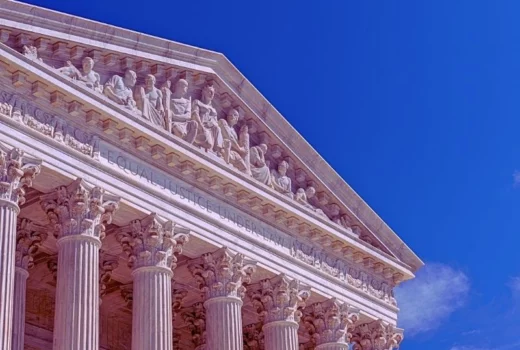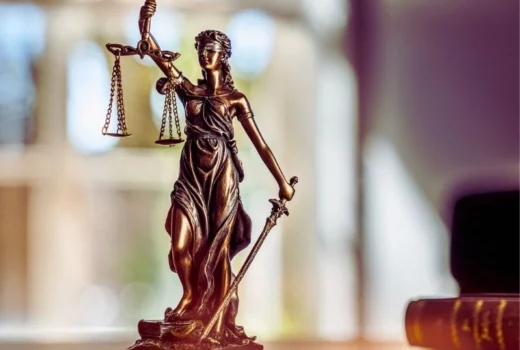
The American Lawyer released its 15th annual A-List rankings of the top 20 “most well-rounded” law firms in the United States. Firms are ranked based on a combination of factors including revenue per lawyer, pro bono commitment, racial diversity, associate satisfaction and percentage of female equity partners.

Munger Tolles ranked No. 1 on this year’s A-List. Climbing from last year’s number two, the firm moved up thanks to high scores in diversity, pro bono work, and number of female equity partners. Ropes & Gray came in second place on the A-List with high scores in almost all categories except for diversity. Paul, Weiss jumped 23 spots to claim the No.3 spot, thanks to a strong female equity score and significant increase in associate satisfaction. Kirkland & Ellis landed spot No. 17, slipping from 8th place last year, due to a decrease in its associate satisfaction and diversity scores. Skadden Arps moved up four spots to claim 12th place, thanks to an increase in its associate satisfaction and pro bono scores.
New firms added to AmLaw’s A-List were Paul, Weiss (No.3), Sherman & Sterling (No.8), Simpson Thacher & Bartlett (No.14), Manatt, Phelps & Phillips (No. 15), Arnold & Porter (No.16), and Hughes Hubbard & Reed (No.19).
Additionally, The American Lawyer released a list of the next 20 A-List firms (No. 21-40), The A-List Runners Up. A few firms on the list made last year’s Top 20 but faced shortcomings in vital areas, forcing them off in 2017. Those firms were Morrison & Foerster (No. 22), Jenner & Block (No. 23), Sullivan & Cromwell (No. 24), Willkie Farr & Gallagher (No. 25), and Cleary Gottlieb Steen & Hamilton (No. 26).
See the full report and article on The American Lawyer.
Please contact Bill Sugarman, a legal recruiter, for more information.
Law firm managing partners’ expressed greater optimism in the economy and legal market for the second half of 2017, according to a report released by Citi Private Bank.

The quarterly survey polled law firm leaders, 106 of which are among Am Law’s top 200 firms. Over half of those who participated in the survey expressed confidence that the second half of the year will be considerably or somewhat better than the first, indicating an uptick in overall confidence from the previous quarter.
The projections, according to the Am Law Daily, “may prove to be a bullish outlook for an industry that has been dogged by stagnant demand, particularly among Am Law Second Hundred firms.”
See the full report and article on The American Lawyer.
Contact Bill Sugarman for more information.
The National Law Journal released the 2016 Intellectual Property Hot List: a special report recognizing 15 law firms that performed exceptionally well in intellectual property. In no particular ranking, each of the 15 firms stood out for handling remarkable IP cases in 2015. Ranging in size, from Biglaw to small, IP boutiques, some firms lead victorious cases that impacted major industries.
Jenner & Block gained recognition for saving rapper, Jay-Z, who faced a copyright infringement battle for using a sample of an Egyptian composer’s song in one of his own in 2000. Andrew Bart, partner at Jenner, argued and won the case on the first day of trial. The Chicago-based firm also claimed big wins on the patent side for their clients: Hospira Inc., Dow Chemical Co., and Nissan North American Inc. Attorneys at Jenner are now working on new litigation cases over the innovative technology associated with gene editing.
According to the NLJ report, California-based Cooley faced a $500 million patent infringement case representing Qualcomm Technologies Inc. against ParkerVision Inc. involving converting electromagnetic signs from high to low frequency. Timothy Teter, a younger generation partner at Cooley, argued the case, resulting in the three-judge panel reversing the original verdict.
Biglaw Kirkland & Ellis made the IP Hot List, in large part, due to their extraordinary patent litigation team. Kirkland partners, Dale Cendali and Daniel Bond, handled a copyright case for Nike Inc. in 2015. Photographer Jacobus Rentmeester accused the Nike brand of copying a 1984 photo he took for Life magazine of Michael Jorden to use for its famous “Jumpman” logo—a $2 billion brand. New York partner Greg Arovas told NLJ, “There’s really substantial trial work done by some of the less senior people in the department.”
Los Angeles-based Sheppard Mullin, a firm less than half the size of Kirkland, won a unanimous case against the U.S. Supreme Court. Incredibly, the case in point, Hana Financial v. Hana Bank, was one that had not been brought to the high court in almost 100 years. Sheppard also gained a notable win in its six-year litigation fight in Intellect Wireless v. HTC, ultimately resulting in the court awarding HTC Corp. $4.1 million. According to the National Law Journal, the firm’s IP practice has grown three times in size since 2006.
Among the other dominating Intellectual Property firms that made the 2016 IP Hot List were: Covington & Burling, Debevoise & Plimpton, Fish & Richardson, Gibson, Dunn & Crutcher, Goodwin Procter, Irell & Manella, Kilpatrick Townsend & Stockton, Morrison & Foerster, Orrick, Herrington & Sutcliffe, Sterne, Kessler, Goldstein & Fox, and Wilmer Cutler Pickering Hale and Dorr.
See more of the highlights from the NLJ 2016 IP Hot List on the National Law Journal.
Contact Bill Sugarman for more information.
The American Lawyer released the 14th annual A-List: an analysis and ranking of the 20 top Big Law firms. The firms that made the AmLaw A-List cut are the best-of-the-best and are rated according to performance in four key areas: financial success, pro bono commitment, diversity and associate satisfaction.

AmLaw Second Hundred firm, Irell & Manella, reigns in at Number 1 this year, proving that size isn’t everything, with only 126 lawyers. The Los Angeles-based firm made an impressive leap from the bottom of the list (No. 18 in 2015), due to a significant increase in associate satisfaction and pro bono scores. Kirkland & Ellis landed spot No. 8, slipping from fifth place last year, due to a decrease in the diversity category. Skadden, Arps, Slate, Meagher & Flom took 16th place, thanks to the double-weighted revenue per lawyer category. Skadden moved up one spot, despite low associate satisfaction and decreasing diversity scores.
New firms added to the AmLaw A-List this year are: Chicago-based Jenner & Block, Covington & Burling out of Washington, D.C., and New York-based Willkie Farr & Gallagher. Those three firms forced out the following: Hughes Hubbard & Reed, Williams & Connolly, and Weil, Gotshal & Manges.
Additionally, the American Lawyer announced a list of the next 20 A-List firms (No. 21-40), the Ones to Watch. A few firms on the list made last year’s Top 20 but faced shortcomings in vital areas, forcing them out in 2016. Hughes Hubbard & Reed, previously a Top 20 A-List firm, faced a hit in the associate satisfaction category, knocking them down to Number 21. Chicago-based Winston & Strawn performed well, up from 57th to 34th place this year, thanks to a substantial increase in associate satisfaction.
Please contact Bill Sugarman , a legal recruiter, for more information.
The announcement of the $2,000 per hour lawyer and the first-year associate starting salaries rising to $180,000 has stirred up a largely negative reaction from Biglaw clients, Above the Law reported. After the first-year salary news release, Bank of America’s global general counsel made their opinions very clear in an email that’s become public, “we are aware of no market-driven basis for such an increase and do not expect to bear the costs of the firms’ decisions” (Above the Law). According to BTI Consulting Group, the $2,000/hour billable rate structure reflects a shocking 25% increase from 2014’s highest rates, as reported in The American Lawyer.

According to Above the Law, the increase of compensation and rates at large law firms will likely open a door for “value” firms, making them more attractive to legal departments at corporations. The technology and tools available today make it possible for smaller firms to have access to the resources that Biglaw can provide to its corporate clients. Social media outlets and digital publishing software play a large role in making it easier for smaller firms or lawyers to make themselves more reputable to a larger audience. The release of these two pieces of news has created an optimal time for small and medium firms to take advantage of impressing corporate counsel (Above the Law).
For more information, contact Bill Sugarman.
In a profession “less diverse than doctors or engineers [who are] 88 percent white,” says Danielle Holley-Walker, dean of Howard University Law, the legal community is still struggling with diversity (as quoted in the ABA Journal). In fact, the recently released Vault/MCCA Law Firm Diversity Survey found that out of 250 law firms, an overwhelming 84 percent of attorneys self-identify as white/Caucasian, with only 3 percent identifying as African-American, 6 percent as Asian-American, and another 3 percent as Hispanic/Latino. The report also concluded that while the recruitment of minorities has slightly increased, the attrition of these minority attorneys is still occurring at a disproportionate rate.

Perhaps even more alarming is the ‘double jeopardy’ plight of minority women in law. The ABA Journal reported in their March issue headliner that an astounding 85-percent of U.S. minority female attorneys will quit their large firms within seven years of starting their practice. And, minority racial status aside, “women account for only 18 percent of equity partners in the Am Law 200 and earn 80 percent of what their male counterparts do for comparable work, hours, and revenue generation,” reported the 2015 survey by the National Association of Women Lawyers (as quoted in the ABA Journal). Add race back in to find that minority women accounted for a mere 2.55 percent of partners in 2015, rendering them the “most dramatically underrepresented group at the partnership level, a pattern [holding] across all firm sizes and most jurisdictions,” (NALP, as reported by the ABA Journal).
So, in light of the many disturbing statistics, what can and are law firms doing today to help bridge the inequality gap? Howard law dean Holley-Walker suggests that young minority lawyers should make an extra effort to build relationships with partners, who serve to not only mentor them now, but eventually to act as a sponsor, ready to “go to bat” for the younger attorney (as quoted in the ABA Journal).
And it appears that some firms are already going the extra mile. Above the Law released the results of their 2016 Law Firm Gender Diversity Index, which classified over 200,000 attorneys and assigned grades based on each firm’s gender diversity statistics. Milwaukee-based Quarles & Brady stood out in the top six of all firms, and was awarded an A+.